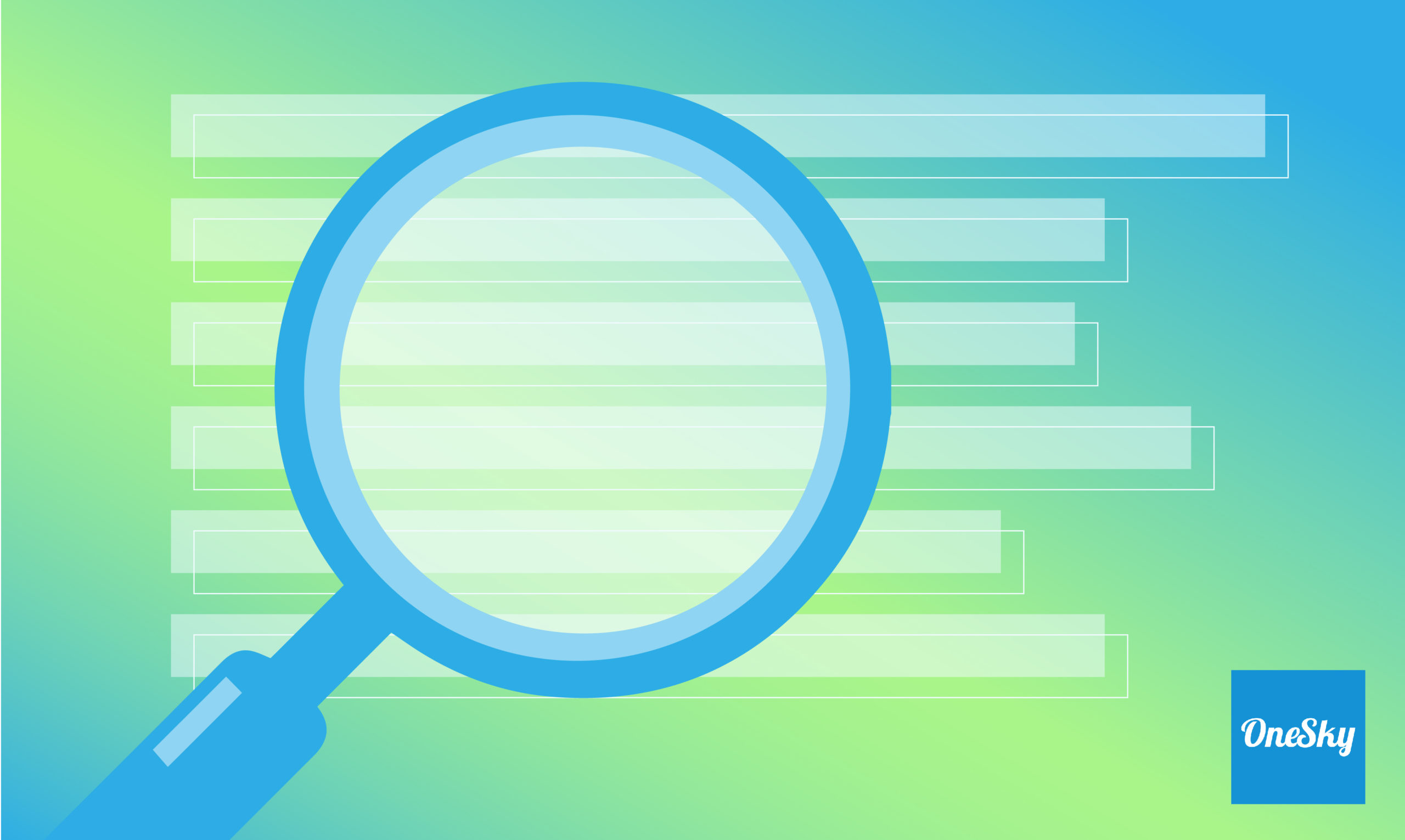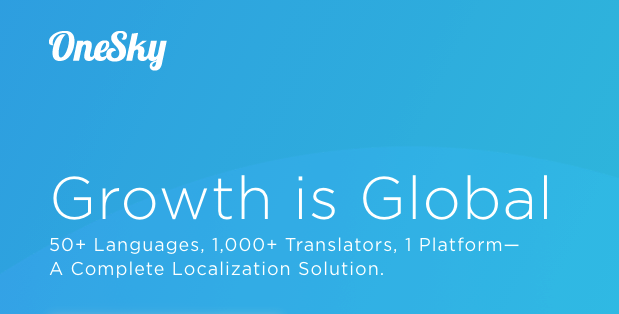Translation Assessment: How to Review Foreign-Language Content
Most of us think about translation as a simple transfer of meaning from one language to another. But in reality, the process is far from straightforward. For this reason, it’s a good idea to set up some form of quality assurance — known in the industry as translation assessment or translation testing. Because the translation process is creative and subjective, it can be tricky to create a series of foolproof translation assessment tests. How do you check for quality when two different experts can have different but valid opinions?
The key is setting out clear definitions of what you want, building a solid framework for assessment, and seeking the right professional help. In this guide, we’re going to show you how to approach all three aspects.
What Are the Main Features of Good Translation?
The purpose of translation is to make yourself understood in a different language. The job of a professional translator is to interpret the language of your source material, and use the correct vocabulary to recreate your meaning and tone in the target language.
In some cases, this means focusing on the same business goals as the source text does — such as a copy that promotes a product, or a call to action that creates urgency.
Of course, there is also a technical aspect to translation. Professional translators need to communicate your ideas while still using correct grammar and punctuation for your target language.
If the target language uses different pronouns for formal and informal encounters, your translator will need to make a judgment call.

The other key principle of translation is consistency. If you repeat the same phrase with the same meaning throughout your source text, the translated version should reflect that.
What Is Translation Assessment?
Translation assessment is a structured process that allows you to verify the quality of a translation. It is based around the key pillars mentioned above.
While every translation project is a little different, assessment usually involves answering the following questions:
- Does the translated text match the meaning of the source text?
- Does the translated text read well?
- Are there any errors in spelling, grammar, or punctuation?
- Has the translation been applied consistently?
Unlike technical translation tests, translation assessment can be a little subjective. This means it’s really important to use language professionals with strong translation skills to run the tests.
In order to make the tests as standardized as possible, professional translation services use established models for assessment. These are essentially scoring systems for translation errors.
The idea is that each translation receives a total mark, which makes it easier to track and grade quality over time.
Today, much of the workload for translation assessment can be completed using automated tools. Many dedicated translation platforms have this feature built in.
What Are the Benefits of Translation Assessment?
In many respects, the benefits of translation assessment align with those of quality assurance in general.
By adding a review step, you ensure that any content you plan to publish will have the minimum number of errors. Just as importantly, you should avoid mistakes that could cause offence or have readers laughing at your brand. This is a very real threat when you are working in an unfamiliar language and culture.
By consistently delivering high-quality content, you will build the trust of consumers and buyers who speak your target language.
Statistics show that most people are more likely to trust product descriptions in their mother tongue. However, you will only build trust if your content appears truly native.

By ensuring that you are using natural language, your translation assessor plays an important role in earning the hearts and wallets of new customers.
Why You Need a Process for Translation Assessment
You may be wondering why it’s necessary to create a process for translation evaluation. After all, you may be paying a professional service provider to produce high-quality translations.
But just as with writing, mistakes happen. Sometimes it’s due to errors in the source text. On other occasions, it’s because of a misunderstanding or through simple human error.
Whatever the reason, those mistakes need to be picked up. Building a methodology for testing translation projects will help your tester to cover all bases, and focus on the most important parts of the translation.
If you choose to use a scoring model, you can also gauge the ongoing performance of your chosen translation service provider. If problems emerge, you can take action swiftly.
Overall, it makes the process of translation evaluation much more efficient and effective.
The 4 Key Stages of Translation Quality Assessment
Now we understand why translation evaluation is a good idea, let’s take a closer look at what translation testing looks like in the real world.
While the order and specifics may change, the following steps are common to most translation quality assessments.
1) Check for Accuracy of Meaning
The most labor-intensive part of translation assessment is the check for accuracy of meaning. No software can run this test automatically.
You need someone who is fluent in both the source language and target language, ideally with strong copy editing skills and some knowledge of the topic being written about.
In their read-through of the target text, translation testers will usually score the content by translative equivalence.
What Is the Meaning of “Translative Equivalence”?
Equivalence is an important concept in translation. The term is used when talking about how closely translated content matches the meaning of the source text.
Ideally, you want to be hitting high equivalence.
But the thing to remember is that languages are not codes. There is no master key that provides a direct match for your target language — not even a bilingual dictionary!
For this reason, sometimes a document that hits high assessment scores won’t match the expectations or sentiment of the author. This is where expert oversight becomes really important.
2) Check for Quality of Language
In professional translation, basic errors are fairly rare. This is partly because most services use CAT (computer-aided translation) tools to do the heavy lifting. An expert translator then comes along and makes any adjustments necessary.
However, language testing is still necessary. Why? Because matching the meaning and sentiment of the source text isn’t enough.
Say you write a great blog post in English, and you want it translated into Spanish. The translated copy should be every bit as readable as the original.
For this reason, it’s a good idea to make a qualitative assessment of translations.
Some of this work can be automated. For example, specialized tools will be able to score reading level and flag up awkward sections of language.
Your assessor will then need to check sections manually, particularly where industry-specific language is being used.
3) Technical Check
Checking for correct grammar and punctuation might seem like nit-picking, but it’s actually a vital part of any translation test. It only takes one misplaced comma to transform the meaning of a sentence. Here is a common (humorous) example often cited in English:

Most technical mistakes can be picked up by automated software, although the occasional error might pass through the net.
Human oversight can make these checks more thorough, but the tester might need to communicate with the original translator to understand the meaning of some passages.
4) Consistency Check
The final aspect of translation quality assessment is a check for consistency.
In large projects, it’s not uncommon for more than one language professional to work on a translation task. At times, they may translate the same source text in a different way. Each version is technically and linguistically correct, but the mismatch will seem odd to any reader who is paying attention.
It’s a bit like when one author starts a series of novels, and another continues the thread.

As part of the assessment process, it’s important to take note of these translation problems. Automated editing tools can highlight the most obvious discrepancies; language professionals are likely to notice other examples in a quick read-through.
Another good way to reveal inconsistencies is through back-translation. This is where you translate the target text back into its original language. This type of translation usually magnifies the differences between translation styles — plus, the problems are easier to identify in your own language.
What Are the Main Challenges of Translation Assessment?
Following the methodology above, you should be able to create a translation assessment process that covers all bases. That said, there are a few challenges that often seem to crop up.
Perhaps the most common is a difference of opinion. Say you ask a translator to convert some content from French to English, and then you ask another language professional to act as a multilingual copy editor.
Much of the time, the two individuals will come to an agreement about what should be changed from the initial translation. But there will be occasions when they see things differently.
For this reason, including two independent professionals in the assessment process is preferable. Under all circumstances, you should also make it clear who has the final say.
Assessing Translations for Business
Industry-specific terminology is another common cause of problems in translation assessment. If your chosen expert does not fully understand the meaning of the source text, it will be almost impossible for them to pick up translation errors.
To overcome this issue, it’s a good idea to choose translators and testers with knowledge of your industry. In addition, you should supply them with a dedicated glossary.
One other common pitfall of translation assessment is focusing too much on equivalence.
In some cases, close equivalence is vital. But more commonly, you are more likely to achieve your business goals by straying from a perfectly literal translation.
The fact is, some phrases, idioms, and jokes simply don’t translate well into foreign languages. The same goes for SEO keywords.
When you come to evaluate translation quality, it’s worth bearing this in mind — allow your translator a little creative license when marking their work.
How to Improve Your Translation Process
Just like a teacher marking your homework, translation assessment is all about setting a benchmark. If you want to improve your scores, you will need to make some changes.
By far the best way to unlock better quality is by hiring true experts for initial translation. Professional services are very affordable nowadays, and they can provide impressive turnaround speed.
The same goes for assessment. If you choose the right provider, you will be able to find well-qualified people for both tasks. Creating a clear, comprehensive assessment method will help the professionals to provide the feedback you are looking for.
Choosing the right translation and assessment tools makes a big difference, as well. With an end-to-end platform like OneSky, you can easily import content, find language professionals, set up a glossary, and provide feedback through one interface.
Just as importantly, your coworkers will need very little training to use the built-in tools.
Want to learn more about improving the quality of translations? Download our free ebook today, and sign up with OneSky to start streamlining your process.



 Written by -
Written by - 


 Written by
Written by 


